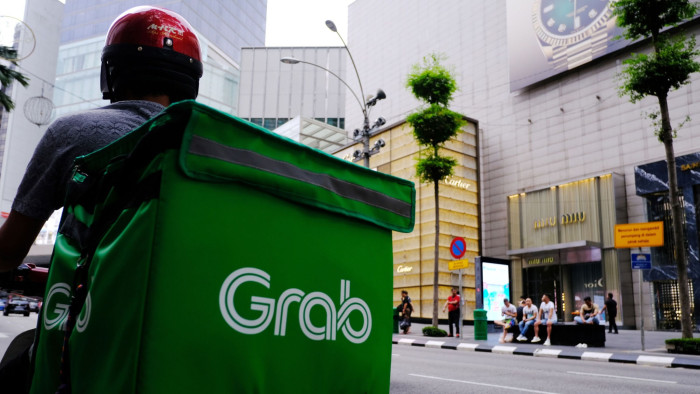Covid-19 cloud has a silver lining

Simply sign up to the Asia-Pacific companies myFT Digest -- delivered directly to your inbox.
Asia’s once-booming technology scene is suffering from the Covid-19 outbreak but the news is not completely negative. Some companies, particularly in health-related areas, have benefited while others have taken advantage of the crisis to make big strategic investments.
Overall, the pandemic may accelerate the already rapid pace of disruption under way in Asia tech, analysts say. Sharp divisions are set to appear not only between strong and weak companies, but also between vulnerable and resilient industry sectors.
“We will have a severe recession [in Asia] . . . but not a depression,” says Donghyun Park, economist at the Asian Development Bank in Manila. “Governments can and should and will act ultra forcefully,” he says, suggesting that their efforts may be enough to avert lasting economic damage.
Duane Kuang, managing partner of Qiming Venture Partners, a venture capital firm with $5.3bn under management in 200 portfolio companies across Asia, expects a polarising effect.
Weekly newsletter

Your crucial guide to the billions being made and lost in the world of Asia Tech. A curated menu of exclusive news, crisp analysis, smart data and the latest tech buzz from the FT and Nikkei.
“There are companies that were struggling before the pandemic, and then things just got much worse,” he says. His fund will take a “very cautious look” at some weaker portfolio companies.
But Qiming, which in April raised a $1.1bn fund to invest in healthcare and the technology, media and telecoms sectors, sees several advantages in the current environment. Healthcare is the obvious beneficiary but the attractiveness of some information technology and artificial intelligence companies has also been enhanced, Mr Kuang says.
CanSino Biologics, a listed Chinese biotech company, announced in April that it was moving into a second phase of clinical trials for a potential vaccine against the Covid-19 virus. Other companies, which provide medical advice online, have seen a strong rise in traffic, particularly in China, as patients resist going to hospitals.
WeDoctor, a Qiming portfolio company that provides online video consultations between patients and a pool of 320,000 doctors, saw usage rates surge as the epidemic took hold in China. The company is preparing for a $1bn initial public offering in Hong Kong, according to people familiar with the matter.
In another example, Akeso, a little-known Chinese biotech company that develops cancer drugs and immunology treatments, found that demand for its debut share offering on the Hong Kong market in April sharply outstripped supply. Demand for the $314m float was 639 times the number of shares offered as Hong Kong’s many “mom and pop” investors bought into the healthcare theme.
The virus could also benefit some Chinese ecommerce companies. JD.com is understood to be planning to raise up to $3bn in a share offering on Hong Kong’s stock market while publicising its feat of posting double-digit growth in the first quarter in spite of city lockdowns in China.
Such activity follows an unprecedented five years for Asia’s tech sector. First, China became home to the world’s most vibrant start-up ecosystem, judged by the number of “unicorns” — the start-ups it created that are valued at more than $1bn.
Then some of that dynamism spread to south-east Asia and India, helping to seed a tech renaissance that flourished until the virus struck.
By mid-2019, India had emerged as one of the most vigorous tech centres, boasting some 30 unicorns, up from a handful two years before.
Similarly, south-east Asia, a region of 650m people in 11 countries, was also riding a tech wave with start-ups such as Grab in Singapore and Go-Jek in Indonesia achieving valuations of $14bn and $10bn respectively as they rolled out “superapps”, which offer a host of services from ride-hailing to food delivery on a single smartphone app.

This year, though, some of the dynamism has faded because of the pandemic and fallout from a disastrous investment by SoftBank, the biggest investor in Asian tech, in WeWork, the US office-space start-up. Funds raised by venture capital firms focused on Asia fell to a seven-year low of $2.2bn in the first quarter, according to UK data provider Preqin.
Aside from travel-related start-ups, one of the worst-hit sectors is financial technology, or fintech. Two consumer finance companies in Indonesia, Akulaku and Kredit Pintar, show the stress felt in this country of 267m people.
Akulaku, backed by Alibaba’s payments unit Ant Financial and Qiming Venture Partners, was suspended from Mintos, a global peer-to-peer lending platform, after it failed to repay on time $5.1m in loans raised from investors. Kredit Pintar has all but stopped disbursing loans because of the crisis.
Nevertheless, the downturn has created opportunities for tech companies with deep pockets. Facebook’s announcement in April that it would invest $5.7bn in Reliance Jio may be the most consequential bet on the Indian market by a US tech giant to date.
The move appears aimed at creating a superapp to connect India’s 400m users of Facebook’s WhatsApp to some 60m small and medium-sized businesses.
Jio brings plenty to the party. It is owned by Mukesh Ambani, India’s richest man, and operates a cut-price mobile internet service with 388m Indian users.
Such overtures by big US tech hint at the battle for India’s and south-east Asia’s market potential being waged between US and Chinese giants. It pits companies such as Alibaba, Tencent, Google, Amazon, Facebook and Uber against each other in an attempt to dominate technology ecosystems in a region of 2.5bn people.
A key question remains, however. After the pandemic has swept through the region’s economies, what will be left of Asia’s promising technology markets?
Mr Park at the ADB is adamant that India’s tech advance is sustainable. “India has the world’s largest pool of IT talent . . . on top of that, if you look at Silicon Valley it is full of Indian entrepreneurs starting their own businesses.”
His comments could apply more generally: the momentum closing the innovation gap between Asia and the west is likely to continue.

Comments